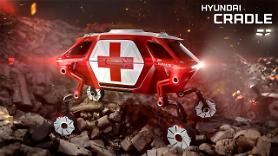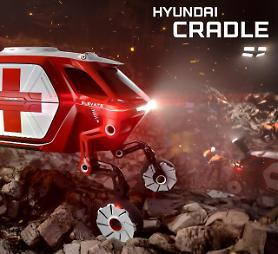
[Courtesy of Hyundai Rotem]
SEOUL -- A leg-wheel military robot developed by Hyundai Rotem made its debut at an international aerospace and defense exhibition hosted by South Korea. The ultimate mobility vehicle (UMV) uses wheels in flat terrain, but intelligent robot legs use walking ability in rough terrain for various missions such as surveillance and the transportation of injured people and goods. Remote and autonomous driving is possible.
Hyundai Rotem, a subsidiary of South Korea's Hyundai auto group, said that its transformable UMV called "DOSS (daring operations in service and search)" was displayed at ADEX 2021, a five-day event that opened on October 19 at a military airport in Seongnam, a southern satellite city of Seoul. DOSS combined intelligent robot technology and wheels.
Based on Spot, a four-legged robot developed by Boston Dynamics, the auto group revealed a leg-wheel robot called TIGER (transforming intelligent ground excursion robot) in February 2021. The robot that is about 0.8 meters (2.6 feet) was designed to navigate through challenging terrain using a sophisticated leg and wheel locomotion system and various sensors.
Four-legged robots or leg-wheel-type robots are being developed by global robot makers and tech companies for their versatility. Unlike their wheeled or tracked brothers, legged robots can move through extreme terrain including rocky boulders and narrow mountain trails. In cases of emergency, they can move faster in severe terrain conditions to carry heavy cargo or patients. When it gets stuck or needs to travel over terrain, TIGER uses its walking ability to get unstuck or more easily travel.
In July, Hyundai Rotem delivered two six-wheeled unmanned ground vehicles (UGVs) for a military test operation. With day and night cameras, driving and surveillance images can be checked in real-time through separate monitors from a long distance. The upper front is equipped with a remote-controlled weapon station, and its back has a loading box capable of carrying more than 200 kilograms of cargo or transporting patients in case of an emergency.
Copyright ⓒ Aju Press All rights reserved.



